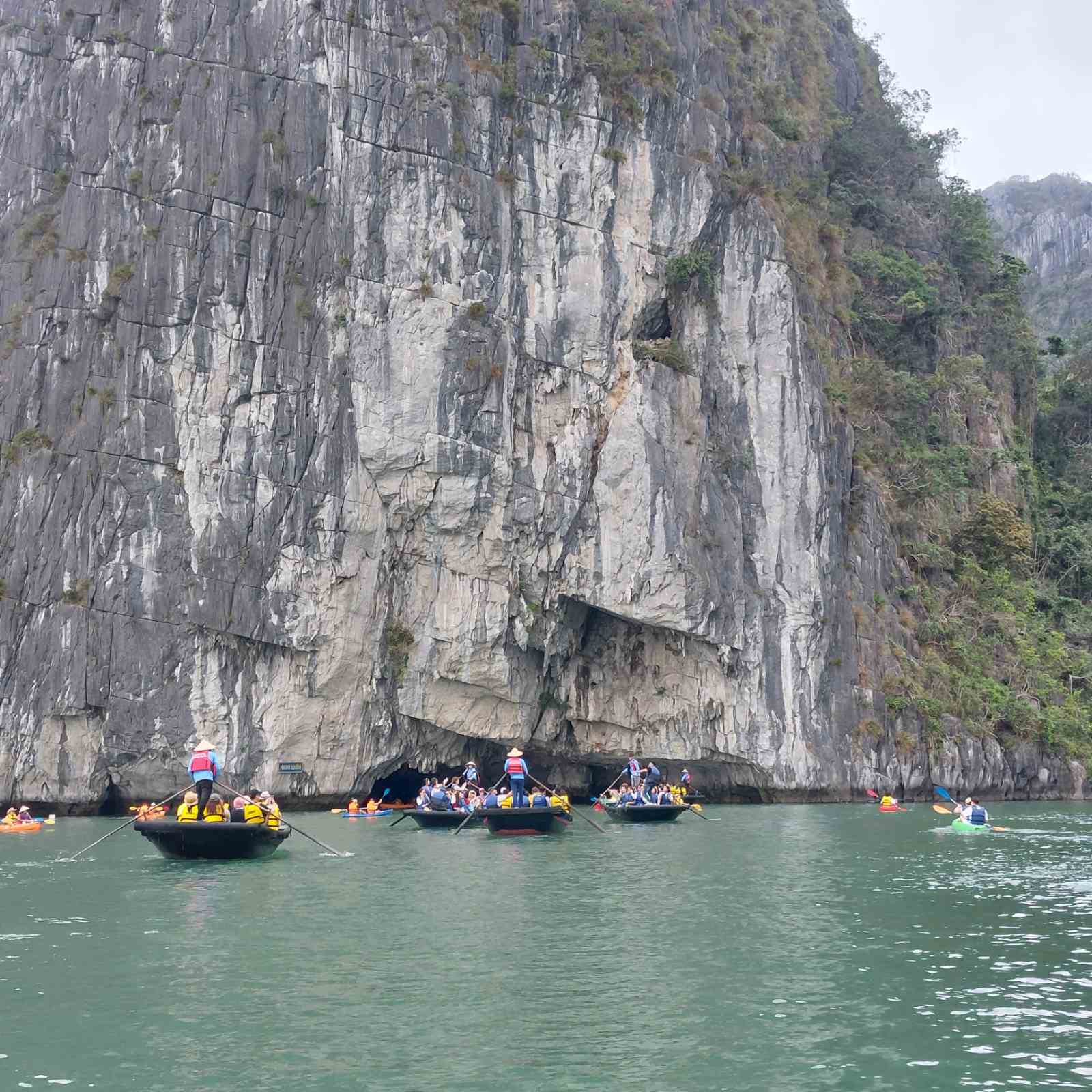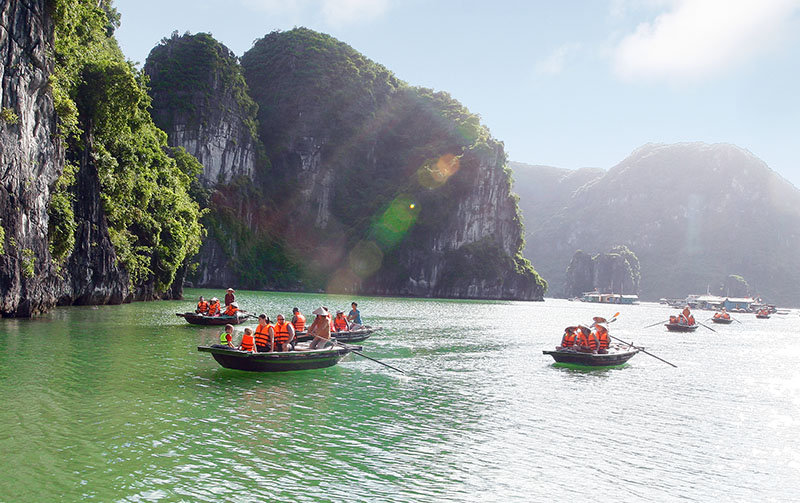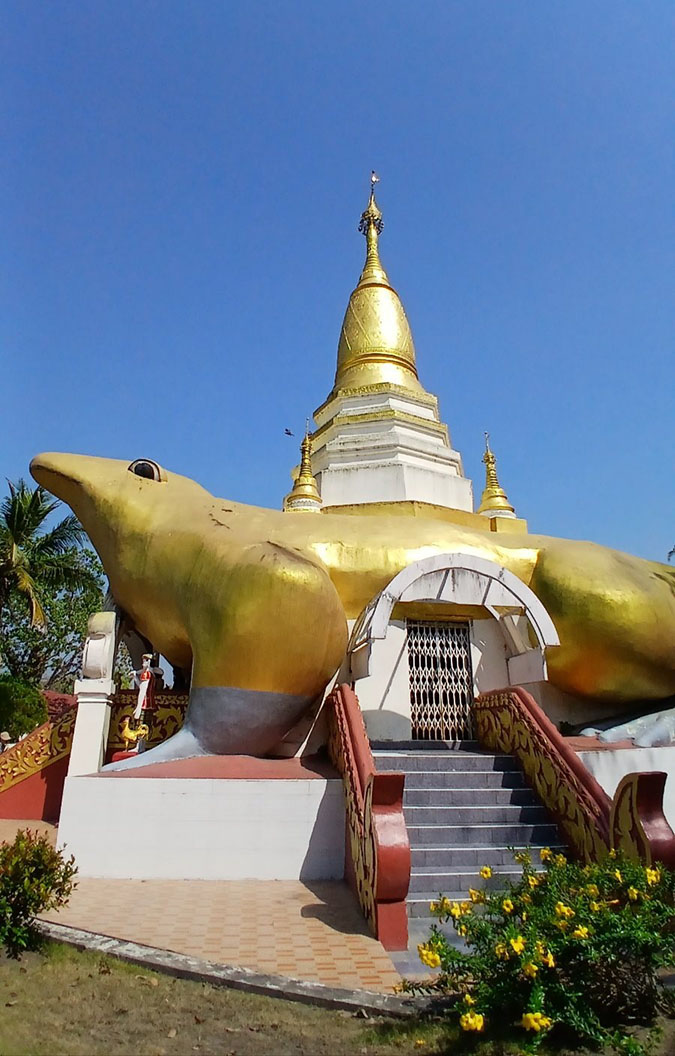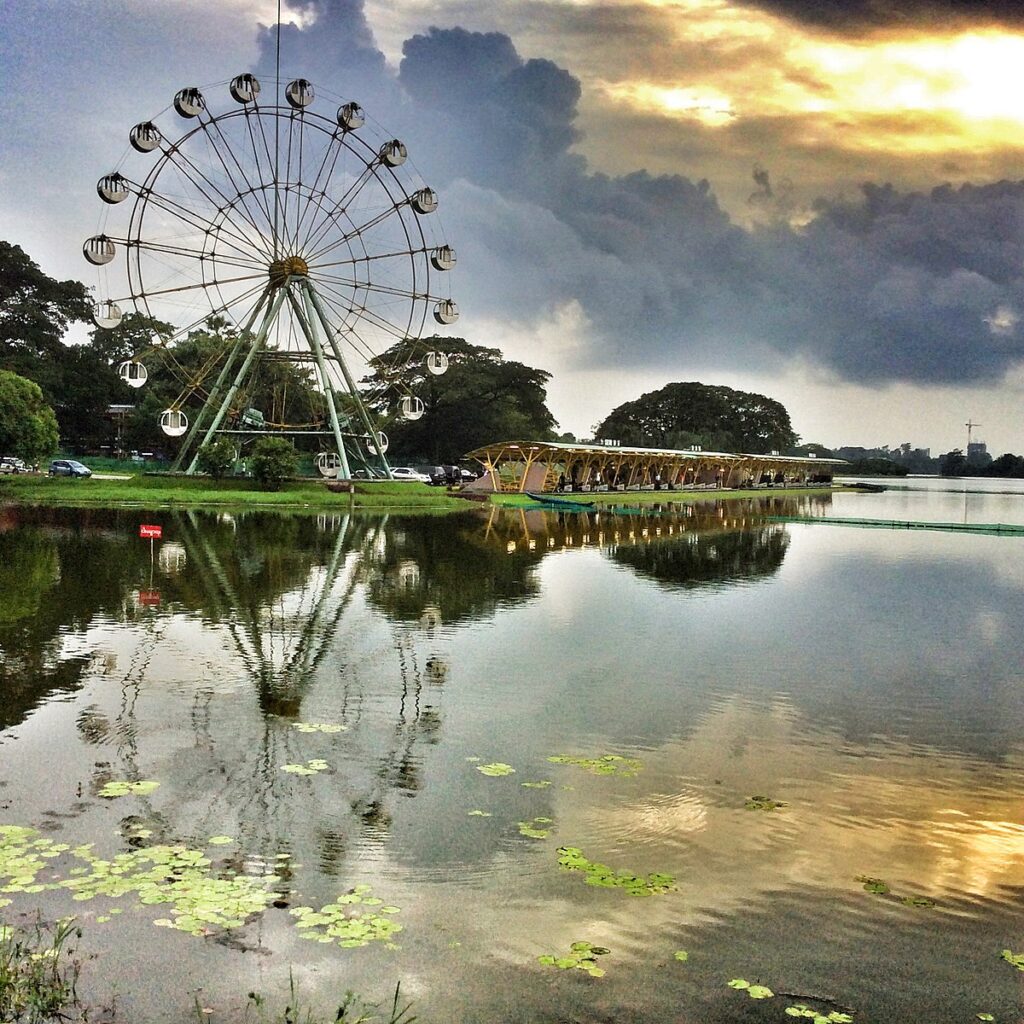Heading to Lush Bay, a Breathtaking Cave and the Land of Pearl 2
Posted_Date
Image
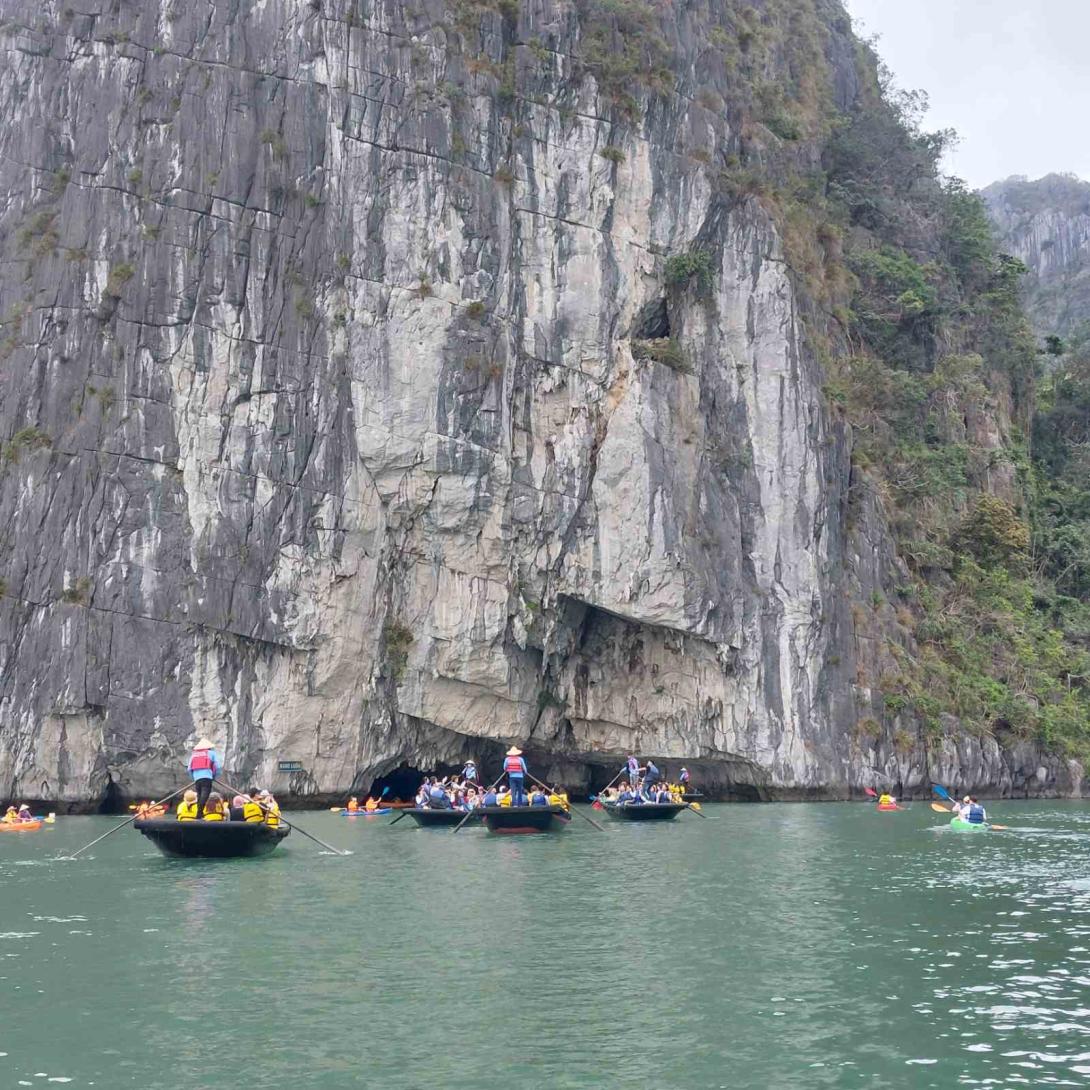
Body
Contined from yesterday
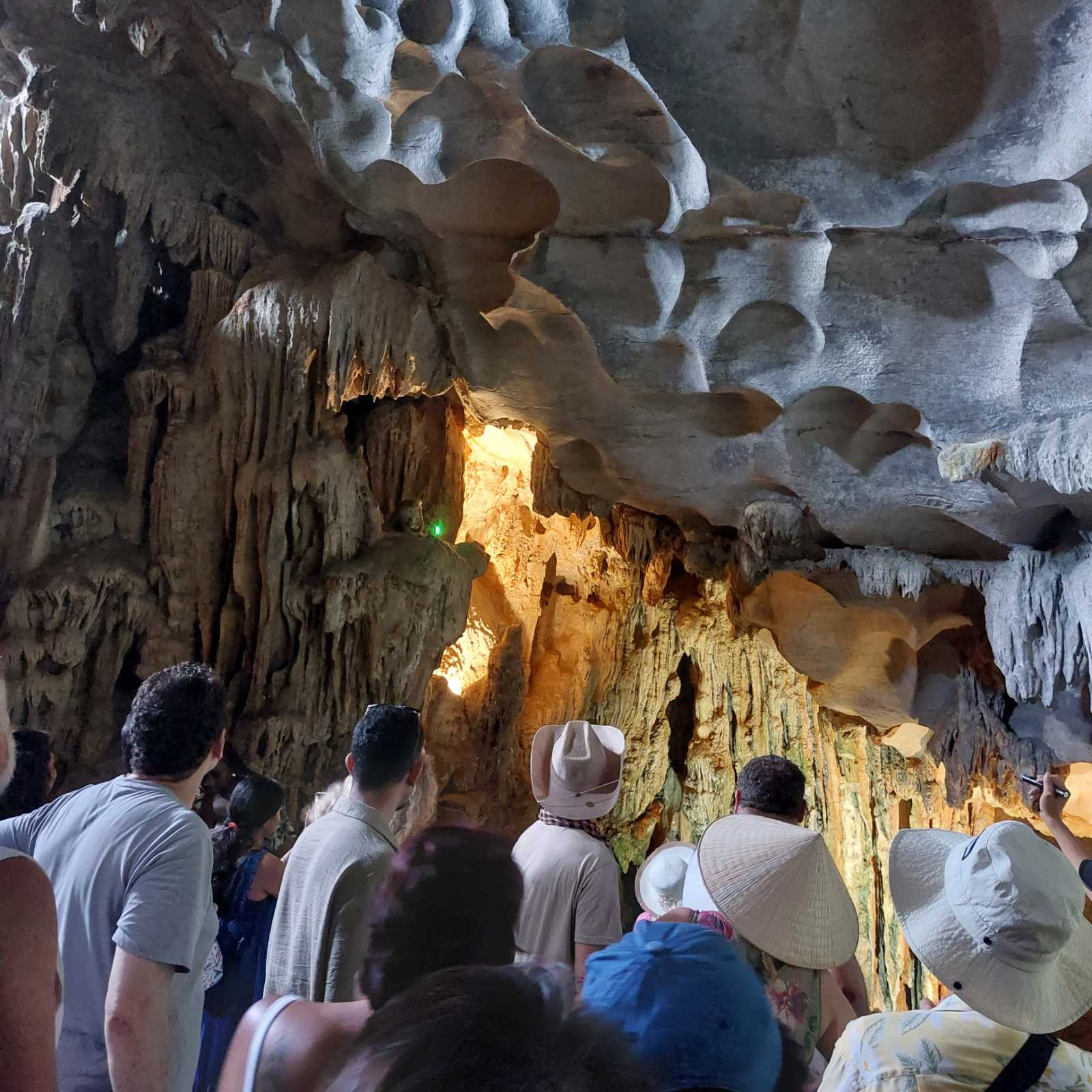
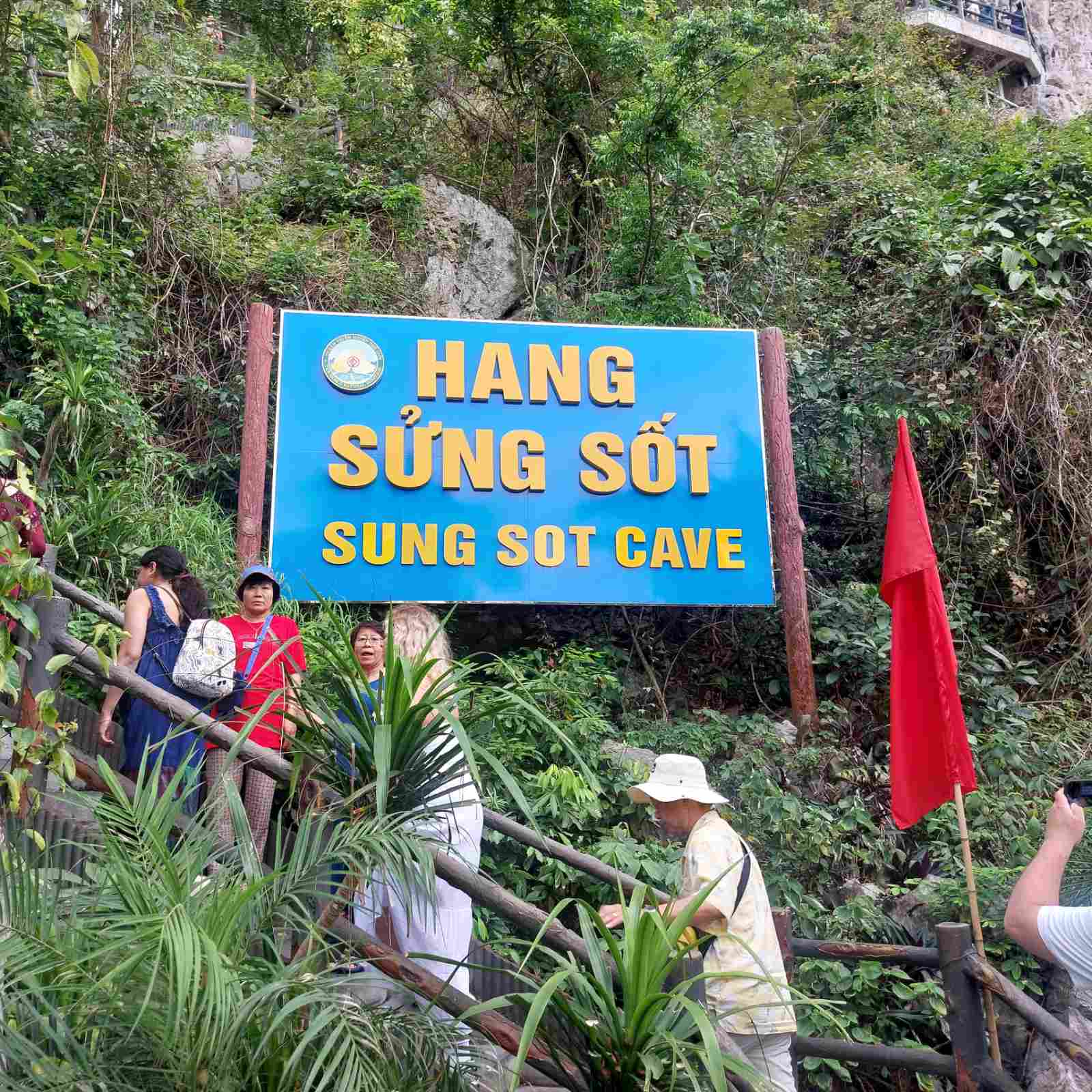
Hiking and a manmade beach at Titop Beach
After finishing the Sung Sot cave tour, the Stella Luxury Cruise continues on the second trip to Titop Island. Titop Island is famous for its hiking trail and manmade sandy beach. The path to the top of the mountain is narrow and steep, and it takes about 20 minutes to reach the summit.
From the top of Titop Mountain, you can enjoy wide panoramic views of Ha Long Bay. Therefore, many travellers prioritize the mountain climbing trip. Upon reaching the summit, visitors can see the most beautiful expansive views of Ha Long Bay, along with breathtaking scenes of large limestone rocks emerging from the water’s surface and the surrounding islands. These scenic views make it one of the best places for photography enthusiasts.
At Titop Beach, the sea water is cool and clear with a deep greenish-blue colour, and the soft white sand allows travellers to relax and unwind. Many swimmers and snorkelers can be seen, as well as hikers on the hills nearby. The entire island is bustling with walkers and photographers. Since it is a manmade beach, natural dunes are not present, so the waves and the white foam running over the dunes you might expect at a natural shoreline are absent here.
Although the sea breeze and the green coconut trees, which are the distinctive features of the sandy beach, are not seen together, green coconuts are being sold at a small shop in one place. Since it is a manmade beach, it cannot compete with nature, but it cannot be denied that it is a beautiful island in the sea.
Ha Long Bay, one of the world’s seven most beautiful bays
From Titop Island, the Stella Luxury Cruise is heading back to the shore to go on its third trip to the main destination, Ha Long Bay. When Stella arrives at the shore, passengers must transfer to speedboats to go to Ha Long Bay. As the small speedboat carrying about 15 passengers, including the guide and the speedboat driver, departs from the shore, it begins to rain again.
It rained off and on all day, so my mood got a little disturbed. For those who prepared sunglasses and big hats to go to the beach, the rain became the villain.
Ha Long Bay is located in Ha Long City, Quang Ninh Province, Vietnam. Recognized by UNESCO as a World Heritage Site, Ha Long Bay is famous for its serene and beautiful limestone karst formations. It covers an area of 1,553 square kilometres and is made up of about 2,000 islands and islets, most of which are limestone mountains formed around 500 million years ago.
Ha Long Bay, which attracts over one million international tourists annually, is an important destination in Vietnam’s tourism sector. With nearly 2,000 limestone islands set against a blue sky backdrop, Ha Long Bay, known for its jade-green waters, was designated a UNESCO World Heritage Site in 1994 and has become one of the most beautiful places in the world.
The speedboat we are on is heading towards the sea channel through the rain and water. Above the sea, where the sky is cloudy with shades of green and blue, there are many limestone mountains and small islands visible, which are a unique attraction of the Ha Long Bay sea channel. Most of the rocky areas are covered with monsoon forests, making the entire environment lush, green, and truly beautiful.
Inside the sea, large cargo ships anchored near the reefs can be seen alongside fishing boats. The Ha Long Bay, bordered by beautiful limestone mountains, looks like a magnificent and unique painting…. We need to study it in the Vietnam water border trade area. The speedboat carrying foreign tourists, navigating swiftly over the water between the rocks to the Chinese border, shows a little boy who seems somewhat tired.
Heading to the most beautiful rocky cliffs in Ha Long Bay
After returning from the stormy sea, drenched by rain and wind, we will head to the final destination, the rocky cliffs of the ocean, using canoes and large wooden boats to closely explore the area.
Even in the drizzle, travellers ventured out — some heading towards the open sea on speedboats, others making their way to the massive rock formations in large wooden boats or canoes. The pier along the beach became a lively scene, teeming with people of all kinds and boats of all colours, reminiscent of bees swarming around flowers. The sea, muddy brown, was rough and choppy toward the open ocean, but appeared calm and still like a lake near the rock formations — a stark contrast. As the large boats steered toward the giant rocks, the joy and excitement of the diverse group of travellers became contagious and deeply felt.
A large boat carrying Chinese tourists in matching outfits was seen rowing towards the rocky outcrops, singing songs in unison. At one point, a boat with young Indian children singing songs also appeared. Out in the water, two people were seen paddling small canoes, swaying gently. Rather than a sea, the place looked more like a large lake surrounded by rocky cliffs.
Not only Chinese and Indians from Asia but also travellers from countries like France and the UK can be seen gathering together on separate boats. When the large boats travelling from the beach to the rocky islets and those returning from the rocks pass close to each other, they greet one another with loud shouts and waves. Witnessing these scenes reminds me of the way water-splashing trucks used to cheer and shout greetings to one another during Thingyan in Yangon. If one is prone to nostalgia, then surely the shadows of the past are full of things to long for.
In one spot beneath the water’s surface, you can see a large, white, jelly-like jellyfish floating close to the boat. Between the rain-soaked cliffs, the sea is calm, with a deep, cool green hue. Among the rocks and stones, lush green trees growing in the crevices catch the eye. Ha Long Bay, one of the most beautiful bays in the world, was included in the New Seven Natural Wonders of the World list in 2012. Ha Long Bay is home to 14 species of flowers and over 60 species of wild birds and animals.
The way back home
When returning from the stone caves, Stella will go out to host Vietnam’s famous coffee, while enjoying the beauty of the sunset over Halong Bay. However, the rain, which had been falling and stopping since morning, did not allow a view of the beautiful sunset over Ha Long Bay.
We had to settle for watching the rainy evening beauty of Ha Long Bay from Stella, through the gaps between the clouds. Although Stella’s upper deck was designed to offer the best view of the bay at sunset, the rain followed its unrelenting script, and we ended up spending the whole day in the dining hall on the lower deck.
The return journey from the beach was accompanied by rain. By exactly 6 am, the vehicles were ready to depart for Hanoi. On this gloomy day, amid the falling raindrops, the travellers from Ha Long Bay seemed a bit melancholic, as if they missed the sea. As usual, the cars made a short stop at a large shopping centre that was connected to a food court along the road.
Driving along the highway, passing through lush green fields and major expressways, we arrived back in the Old Quarter of Hanoi as dusk fell. From the car, we caught a quick glimpse of the beautiful Hoan Kiem Lake, glowing with multicoloured lights. Around the lake, the area was bustling like a night market. In the middle of the lake sits a small island known as Jade Island, home to the famous Ngoc Son Temple. A bright red wooden bridge, known as The Huc Bridge, connects the temple to the lakeshore. Both the lake and the temple are among Hanoi’s iconic landmarks. Although Ngoc Son Temple and the vivid red Huc Bridge are not far from the hotel, we didn’t have time to visit them.
Some shops in the area of Chinatown are quite similar to the Chinatown in Yangon, closing around 9 pm, but the small roadside stalls remain open until about 10 pm or 11 pm. After returning from the beach and passing through southern Chinatown, there aren’t as many motorbikes as in the morning, but a few still zip by now and then. With fewer motorbikes, more cars can be seen on the roads. On the streets, international tourists are still walking around here and there.
In the Chinatown area, signs written in English are quite rare. Notably, only large coffee shops, hotels, and travel agencies display signs in English. Along one street, you can find a travel agency office about every block. The number of international tourists coming to Vietnam is also increasing year by year.
Last year, the number of international tourists who visited was 14.8 million, with more than 2 million tourists coming from Europe and America. I believe that a key factor in the success of the tourism industry cannot be achieved without leveraging the high proficiency of Vietnamese youth in the English language.
Acknowledgement: To be able to write this piece, I am very grateful to my elder brother Ko Kyaw Kyaw Than and his wife Ma Mee Mee from the UK, who supported and arranged the entire trip from start to finish; also to my elder sister Ma Win Win Than, my younger sister Ma Yi Yi Than, and my wife Ma Nwe Nwe Than, who took care of and assisted throughout the journey; and especially to Ma Mee Mee, who took and supported many documentary photographs, I express my special thanks.
GNLM


